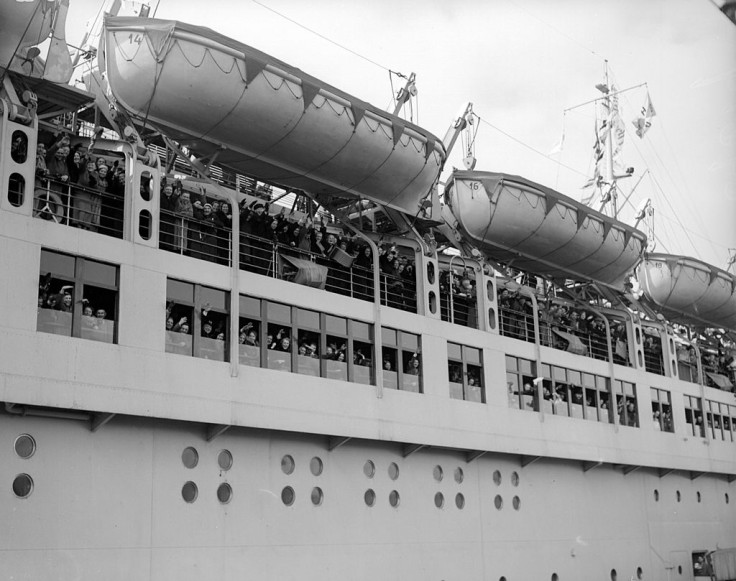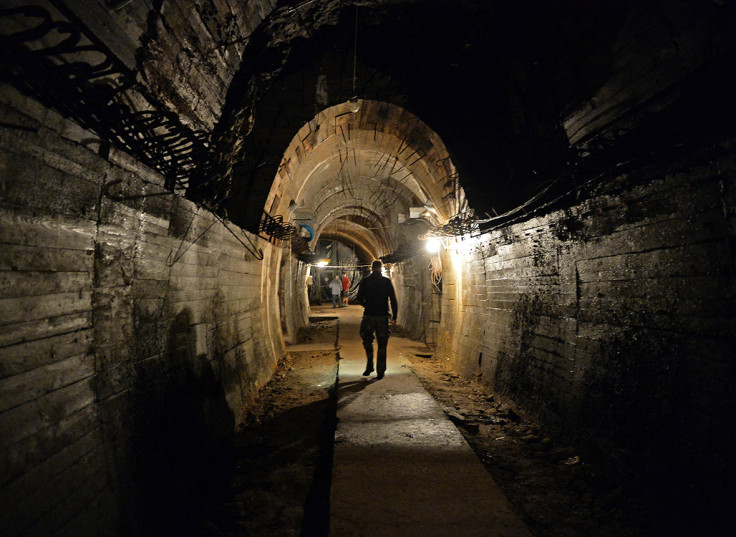Wilhelm Gustloff: Why the wreck of 'Hitler's Titanic' is rumoured to contain lost Nazi treasures
Mysterious crates were allegedly stashed on board the vessel before it was sunk by Soviet torpedoes.

On 30 January 1945, three torpedoes fired from the Soviet S-13 submarine sank the MV Wilhelm Gustloff cruise liner as it was evacuating refugees and soldiers fleeing the approaching Red Army from Gdniya, which was then named Gotenhafen and part of German East Prussia.
More than 9,300 people were killed in the attack, most of them civilians and among them 5,000 children. It is believed to be the largest single loss of life from a sinking vessel in maritime history.
Since dubbed 'Hitler's Titanic', the vessel was the flagship of the Nazi 'Strength Through Joy' fleet, on which loyal workers on the Nazi German Labour Front trade union were given state subsidised cruises to Spain and Norway. During the war, it was used as a hospital vessel, and to accommodate U-boat sailors.
In the decades after its sinking rumours began to circulate about a secret cargo on board the vessel when it was sunk.
Survivor Heinz Schoen published several books on the disaster, one of which claimed crates had been loaded onto the vessel before it embarked.
Briton Philip Sayers met one witness who claimed to have seen the crates, Rudi Lange, while working as a diver in Germany in the late 1980s.
"He told me the story of the sinking, and it was like the sinking of the Titanic, and he managed to survive and in the water spent ages swimming around the dead and the dying. He would break down into tears as the memories of the dead and dying children floating around came back in his mind," said Sayers.
"He explained to me that on the night of the embarkation of the Gustloff a convoy of heavily laden lorries turned up at the quayside as the boat was set to sail" and witnessed a "group of soldiers carrying small but heavy cases up the gangway."
Speculation on what the cases contained continues to this day. Schoen believed that they contained none other than the famous Amber Room panels, pillaged from the Catherine Palace by Nazi forces as they closed in on St Petersburg, and taken to Koenigsberg, a relatively short distance from Gdinya and renamed Kaliningrad after the war.

Lange though, believed the theory was implausible, given the small size of the crates he had seen, and claimed to have discovered what was really inside them.
He told Sawyer he met one of the guards who had transported the mysterious crates onto the vessel at a memorial event for the victims of the Cap Arcona sinking in Neustadt 1972.
"They weren't the Amber Room, they were 64 cases of gold bullion he had personally transported from the Koenigsberg Reichsbank to the Wilhelm Gustloff", Lange told Sayer, with a value estimated at £100 million in today's currency.
According to the soldier's account, the crates were stashed in a special suite of rooms on the vessel reserved for Adolf Hitler, and were to have been transferred to ocean going barges and taken to an unknown safe location, but disaster struck.
Other experts though are unconvinced by the legends of treasure concealed in the wreck.
Journalist Cathryn J Prince interviewed survivors of the disaster for her book Death in the Baltic: The World War II Sinking of the Wilhelm Gustloff.
"No survivor I spoke to or letters or read or anything indicated any kind of any kind of crates being moved on board," she said. "I have spoken to people who worked on the Gustloff before they started taking refugees and no one saw anything. Every available inch of space was taken by people."
Of the Amber Rooms claims, she said: "Historians I talked to said that most likely any kind of treasure like that was probably put into caves or mineshafts", and said it was improbable the Nazis would entrust such valuable cargo to a passenger vessel carrying desperate refugees.
Wreck 'ransacked'
Eager to check out the claims, Sayers and his diving partner undertook a mission to explore the submerged wreck in 1988, which is 50 metres deep approximately 60km from the Polish shore. However they found that they had not been the first.
"It was clear to us people had been out there and had completely ransacked and destroyed the wreck, and my presumption was they were looking for the Amber Room because no one knows of anything else valuable on board," he said.
Sayer believes the Soviets had flattened the wreck to remove the risk of vessels colliding with it in busy Baltic shipping lanes, with the remains scattered in a heap across the sea bed. Other sections looked as though they had been blown apart by explosives. "You could clearly see there were holes cut in the hull, and there were places were people had been at work with heavy duty cutting gear. It looked to me as though it had been blown apart with explosives."
Sayer and his colleague surfaces with a barred porthole from a medical cabin, but on their return to port in Kiel were arrested, and accused of pillaging the wreck.
They were released without charge, and shortly afterwards, at the request of the German government Polish authorities imposed an exclusion zone around the site of the sunken vessel, designating it a war grave, with divers only allowed access to it if granted a special permit.
Diver Mike Boring who Prince spoke to explored the wreck in 2003, and confirmed claims it had been stripped bare, and mysteriously there was not even evidence of human remains.
"There was no evidence of human remains, there were no bones, nothing. So he felt before the Polish government took custody the Soviet had been doing a lot of diving, pulling out and salvaging metal for whatever reason and perhaps trying to hide evidence of what some might consider a war crime."

Legends of secret stashes of Nazi gold continue to attract fascination. In September treasure hunters drew a blank in their search for a train filled with Nazi gold bullion they believed was hidden in a secret tunnel under Poland's Owl Mountains as the Third Reich collapsed.
For Prince, the tragedy of the Gustloff and the myterious fate of the Amber Room will continue to attract rumours. "It keeps attracting people. The legend of the amber room – it is up there with what happened to Anastasia," said Prince.
© Copyright IBTimes 2025. All rights reserved.






















